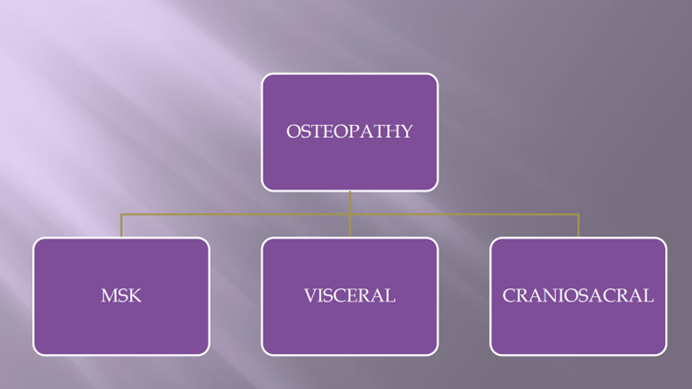Osteopathy was fouunded in the early 1800s by Dr Andrew Taylor Still. It is an alternative medicine deriving from the ancient greek term "osteo" meaning bone and pathy meaning pain or suffering.

Osteopathy is more than the study of the bone however.
I consider it to be the study and science of the body, where one of the core principles of Osteopathy is to treat the body as a unit. Meaning everything in the body is related and is the reason why Osteopathy is unique. Osteopathic Practitioner's look deeper than the symptoms but truly try to understand the cause. Why is there a tilted pelvis, is it due to scoliosis or a leg length discrepancy. Why is the diaphragm's function being compromised? Could it possible due to nerve compression at C3, C4, C5?
Osteopaths, like myself, believe that with disease or dysfunction the blood flow and lymphatic flow become obstructed and understand by restoring freedom in the tissues and allowing the blood and lymph to flow freely, healing can occur.
Osteopathy doesn't claim to miraculously heal disease or dysfunction, as another core principle and a fundamental belief of the Osteopath is that the body has the capacity to heal itself.
I tell every patient I see this belief.
The role of the Osteopath is to simply create an environment in the body where that self healing can occur. Osteopathy is more about correction than elimination.
Simply by improving the function of tissues and structures we are able to improve the body's mechanics and optimal function. This is another core principle "Structure and function are reciprocally interrelated"
Osteopathy can be categorized into structural osteopathy, visceral osteopathy and cranial osteopathy. All 3 are linked in some way and a good Osteopath will blend all 3 treatment techniques to receive the best therapeutic effect.
Structural Osteopathy focuses on mobilising the joints and releasing tissue tension in the muscles, ligaments and fascia. Whereas, Cranial Osteopathy focuses on the cranial bones and their related microscopic movements during inhalation and exhalation. Cranial Osteopathy is important and has a direct relation to structural and visceral osteopathy due to the dura attachments on the sacrum (S2,S3) which we refer to as cranial-sacral therapy. The aim with cranial is by impriving the circulation of CSF and body fluids, patterns of strain can be removed from the body and the nervous system can be relaxed.
Visceral focuses on organ mobility and motility and provides gentle treatment for the organs and the surrounding fascia, to restore proper motion and function.
Osteopathy may be an alternative medicine but nowadays, many individuals will seek an Osteopath as the first point of contact with any pain or discomfort they are experiencing.
The reason, is partly due to all the benefits related to Manual Osteopathic Treatment for any individual going through different walks of life; from the baby who can't turn the head to the left, to the teenager with painful knees, to the adult with poor posture, to the athlete with repetitive ankle strains or the elderly woman with multiple arthritic changes. Osteopathy is beneficial to everyone.
With Osteopathic treatment, posture can be adjusted and improved as the spine and muscles surrounding the spine become more flexible. Respiratory and circulatory systems are enhanced to promote muscle recovery, growth, release of toxins within the body, hence speeding up the natural healing process.
Osteopathy does not simply focus on the body, but is also psychosomatic. Psychosomatic refers to the body and mind relation. Osteopathic treatment has been known to help those who suffer from stress, anxiety, headaches by balancing the parasympathetic nervous system. and relieving tension, muscle spasm and relaxing the body as a whole.
Osteopathy is becoming more and more popular within sport and athletes, as we provide injury management and prevention and vital treatments to enhance performance and aid in recovery.
Last but certainly not least, Osteopathy is unique as it deals with Chronic Pain that many other fields of medicine have not been able to assist with.






